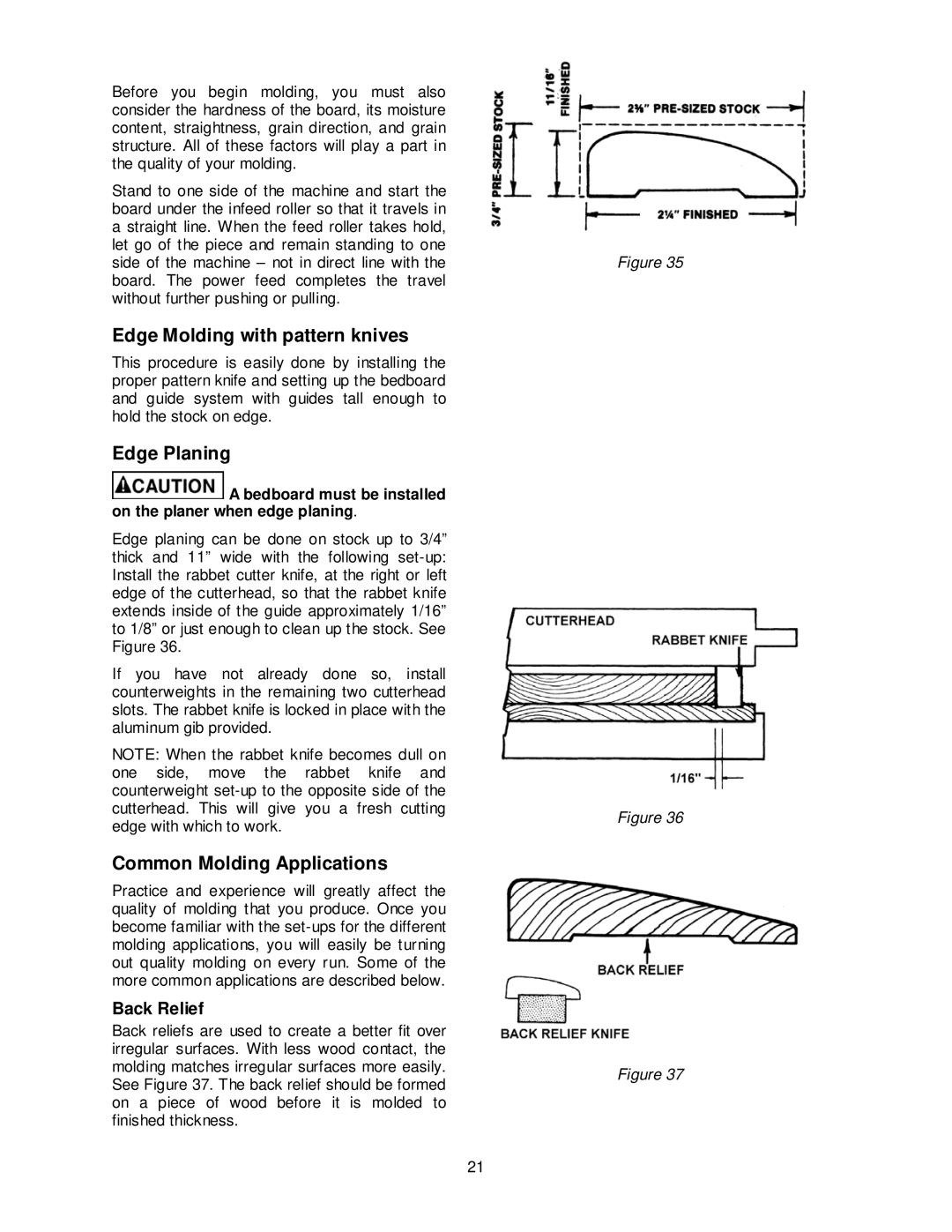
Before you begin molding, you must also consider the hardness of the board, its moisture content, straightness, grain direction, and grain structure. All of these factors will play a part in the quality of your molding.
Stand to one side of the machine and start the board under the infeed roller so that it travels in a straight line. When the feed roller takes hold, let go of the piece and remain standing to one side of the machine – not in direct line with the board. The power feed completes the travel without further pushing or pulling.
Edge Molding with pattern knives
This procedure is easily done by installing the proper pattern knife and setting up the bedboard and guide system with guides tall enough to hold the stock on edge.
Edge Planing
 A bedboard must be installed on the planer when edge planing.
A bedboard must be installed on the planer when edge planing.
Edge planing can be done on stock up to 3/4” thick and 11” wide with the following
If you have not already done so, install counterweights in the remaining two cutterhead slots. The rabbet knife is locked in place with the aluminum gib provided.
NOTE: When the rabbet knife becomes dull on one side, move the rabbet knife and counterweight
Common Molding Applications
Practice and experience will greatly affect the quality of molding that you produce. Once you become familiar with the
Back Relief
Back reliefs are used to create a better fit over irregular surfaces. With less wood contact, the molding matches irregular surfaces more easily. See Figure 37. The back relief should be formed on a piece of wood before it is molded to finished thickness.
21
Figure 35
Figure 36
Figure 37
